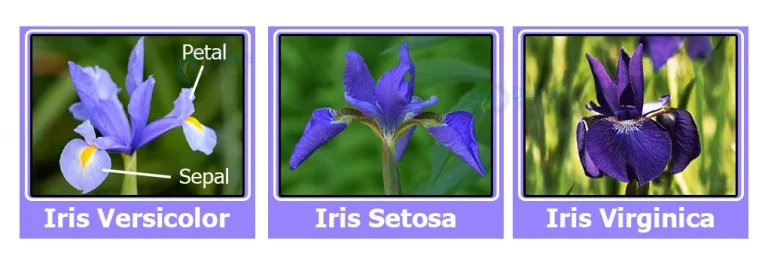Iris Flower Classification with Scikit-learn
Introduction
This project demonstrates how to build a simple machine learning model to classify iris flowers based on their sepal and petal measurements. We'll use the popular Iris dataset, which is readily available in scikit-learn, and explore different classification algorithms.
Uses of this Project
While classifying iris species is a classic educational example, the techniques learned here can be applied to various real-world classification problems, such as:
- Image recognition
- Spam detection
- Medical diagnosis
- Customer churn prediction
Algorithms
We'll experiment with the following classification algorithms:
- Logistic Regression: A simple and efficient algorithm for binary and multi-class classification.
- K-Nearest Neighbors: Classifies data points based on the majority class among their nearest neighbors.
- Decision Tree: Builds a tree-like model to make decisions based on feature values.
Requirements
Make sure you have the following Python libraries installed:
scikit-learnnumpypandas(optional, for data manipulation)matplotlib(optional, for visualization)
You can install them using pip:
pip install scikit-learn numpy pandas matplotlibCode Example (Logistic Regression)
from sklearn.datasets import load_iris
from sklearn.model_selection import train_test_split
from sklearn.linear_model import LogisticRegression
from sklearn.metrics import accuracy_score
# Load the Iris dataset
iris = load_iris()
X, y = iris.data, iris.target
# Split the data into training and testing sets
X_train, X_test, y_train, y_test = train_test_split(X, y, test_size=0.3, random_state=42)
# Create and train a Logistic Regression model
model = LogisticRegression(max_iter=1000) # Increase max_iter if needed
model.fit(X_train, y_train)
# Make predictions on the test set
y_pred = model.predict(X_test)
# Evaluate the model's accuracy
accuracy = accuracy_score(y_test, y_pred)
print(f"Accuracy: {accuracy}")
Conclusion
This blog post provided a basic introduction to iris flower classification using scikit-learn. Experiment with different algorithms and hyperparameters to see how they impact the model's performance. This project is a great starting point for exploring the world of machine learning with Python.
To run the Python code, save it as a `.py` file (e.g., `iris_classification.py`) and run it from your terminal using `python iris_classification.py`. You will need to have the required libraries installed as mentioned in the Requirements section.Learn to classify iris flowers using machine learning! This beginner-friendly project uses Python and scikit-learn to build a predictive model. Explore popular algorithms like Logistic Regression, K-Nearest Neighbors, and Decision Trees to categorize iris species based on sepal and petal measurements. The provided HTML blog post guides you through data loading, model training, prediction, and evaluation. Discover how these techniques apply to broader classification problems, from image recognition to spam detection. Complete with code examples and clear explanations, this project is perfect for getting started with practical machine learning. No prior expertise required!


Comments
Post a Comment